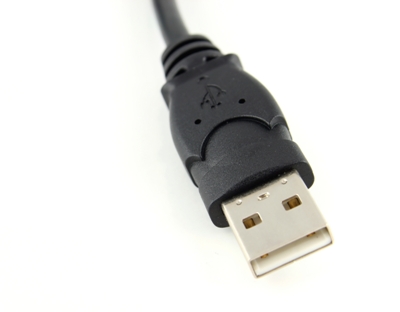
The benefits of cloud based digital signage
Unless you’ve been under a rock for the last eight years, at some point, you’ve probably heard the term “the cloud” in relation to computers and the Internet, even if it’s just Apple’s much loved (and hated) iCloud service.
It’s such a simple phrase but most people don’t actually know what it is. To tell the truth, it’s kind of supposed to be that way. Cloud computing is a fairly loose term that encompasses a whole bunch of technologies to do with services on the Internet.
Let’s use the Kiwi favourite Cloud software company, Xero, as an example. Xero is on the Internet, used via a web browser or mobile app, and you don’t have to worry about all the servers, networks and other technologies that go on behind the scenes to know how to do your accounts. It takes complex things, puts them altogether, and makes it easy for people to use. And that is the essence of the Cloud. Get rid of the tech, and make things easy.
Digital signage in the cloud is no different. The idea is to strip back, simplify, automate and make accessible to Joe Bloggs business owner, for the most part leaving out the IT department and putting the power directly in the hands of the people using it. Instead of having your own staff manage servers, networks, and software updates, that’s all managed for you as part of your subscription fees. Updates are made to the service, not your computer, so you’re always using the latest version no matter what device you’re using.
Let’s look at the three main elements of a digital signage installation:
1) A TV or computer screen, often just referred to as a “panel” in the digital signage world.
2) A media player the hardware and software combo that puts content on the screen.
3) Content the text, images and video showing on the screens.
 When you shift your digital signage to the cloud you add two more key elements, an Internet connection, and cloud based software. It seems like a small addition, but these two things open up a world of possibilities for your content, scalability, time saving, and even the media player you choose. Since cloud-based software runs from a web browser (Chrome, Firefox, Internet Explorer), you’ll be able to access the content running on your digital signs from any device, wherever you are.
When you shift your digital signage to the cloud you add two more key elements, an Internet connection, and cloud based software. It seems like a small addition, but these two things open up a world of possibilities for your content, scalability, time saving, and even the media player you choose. Since cloud-based software runs from a web browser (Chrome, Firefox, Internet Explorer), you’ll be able to access the content running on your digital signs from any device, wherever you are.
Cloud services are charged monthly and for digital signage you can expect to pay anywhere between $30 and $150 a month per media player in use. The difference in price usually reflects the level of support included, which can range from nonexistent to doing everything for you by email.
Of course, if you’re running your digital signs in the cloud, you’re going to need a solid Internet connection. In the age of wifi and ultra fast broadband, this doesn’t usually pose a problem, but you still want to make sure that your provider is efficient with bandwidth and isn’t simply streaming video. A good system should be able to reduce your average bandwidth to about the speed of a dial up modem. A lot of media players come with wifi so you can make use of both private and public wifi networks you may have running and cut down on your installation costs.
The dirty secret with digital signage is that keeping your content fresh is actually quite hard to do. You can get a great deal on a TV and computer and your mate down the road installs it for free, but if you end up having to pay someone to constantly update the content, all that saving has gone to waste. With cloud-based digital signage, there’s no excuse for having tired content.
Feeds for weather, news, Twitter, Instagram, Facebook and YouTube can give you an endless stream of free entertainment and information and you don’t have to lift a finger to get it done.
Scalability is perhaps the greatest advantage of the cloud. With the right tools, running a worldwide accommodation chain network of screens can be just as easy as a single screen in a B&B in The Back of Beyond. Even though cloud based signage systems are considered simple, nice scheduling features tend to still be included. Some will even allow you to show different content depending on what the weather forecast is! Even across a very large network, this type of scheduling can put a localised spin on your content and give each location it’s own flare, without having to manage them all separately.
For small businesses, using cloud-based digital signage is a no brainer, for larger business, it’s tempting to make use of your IT guys and team of designers and web developers, particularly if you think they might be sitting around and twiddling their thumbs. But if you look into your total cost of ownership properly with direct and indirect costs, cloud-based digital signage usually wins the trophy for least expense.
If you can avoid the trappings of focusing entirely on your TV screen and media player, you can see that running digital signage in the cloud is all about saving money. It’s often simpler and less feature rich than it’s non-cloud counterparts, so might not suit your specific requirements, but if you’re looking to reduce your operating costs and make things easier to manage, it’s definitely worth a look.
Loren Greenfield is head of all things tech at Resorts Interactive Ltd, the makers of SeeMonster digital signage. Resorts Interactive has served the ski, hospitality and tourism industry for 10 years with award winning software and services in New Zealand, Australia, the USA and Canada. Studying digital media production at the media design school in 2002, Loren went on to run a web consulting and development business before co-founding Resorts Interactive in 2005, and developing the beginnings of the SeeMonster digital signage platform not long after.







